Discover 9 hidden attractions, cool sights, and unusual things to do in Jordan. Don't miss out on these must-see attractions: Siq (Petra), Great Temple (Petra) or Qasr al-Bint (Petra).
Below, you can find the list of the most amazing places you should visit in Jordan.
Table of Contents
Siq, Petra

Also known as: السيق
Narrow walkway through rock walls. The Siq is the main entrance to the ancient Nabatean city of Petra in southern Jordan. Also known as Siqit, it is a dim, narrow gorge and winds its way approximately 1.2 kilometres and ends at Petra's most elaborate ruin, Al Khazneh. A wide valley outside leading to the Siq is known as the Bab as-Sīq.[1]
Great Temple, Petra

Historical landmark in Jordan. The so-called Great Temple at Petra is a grand monumental complex that lies south of the Colonnaded Street at Petra. It covers an area of ~7,560 m2. The complex was probably completed in the early first century CE, under the rule of Nabataean king Aretas IV, as suggested by architectural and sculptural details.
The "Great Temple" occupied a prime spot in ancient Petra: from its ruins one can now see the Siq to the Southeast, the Qasr al-Bint to the West, and the Lower Market/Petra Pool Complex to the East. It is unclear whether the complex was a religious or administrative building, and – if it was indeed religious – how exactly it functioned or to what deity it was dedicated.[2]
Qasr al-Bint, Petra
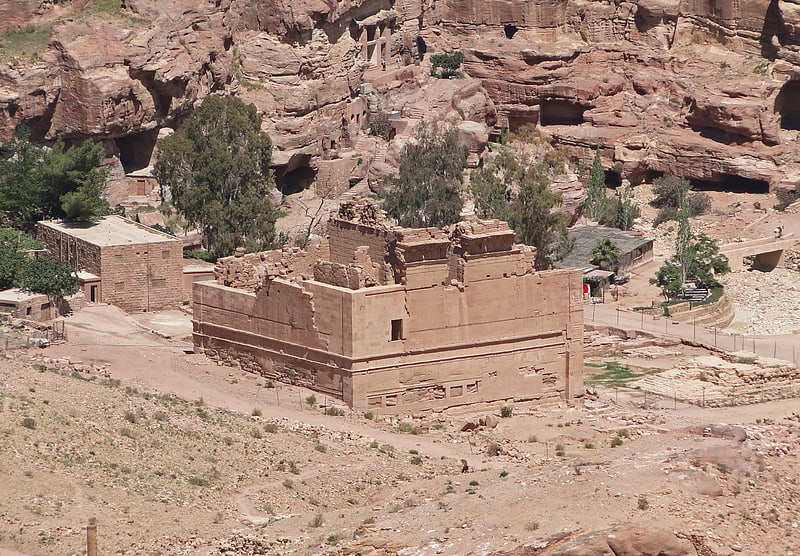
Historical landmark in Jordan. The Qasr al-Bint is a religious temple in the Nabataean city of Petra. It faces the Wadi Musa and is located to the northwest of the Great Temple and to the southwest of the Temple of the Winged Lions. One of the best preserved of the ancient structures surviving in Petra today, it stands near the monumental gate and was a key focal point on the colonnaded street, as well as a focus of religious worship.[3]
Amman Citadel, Amman
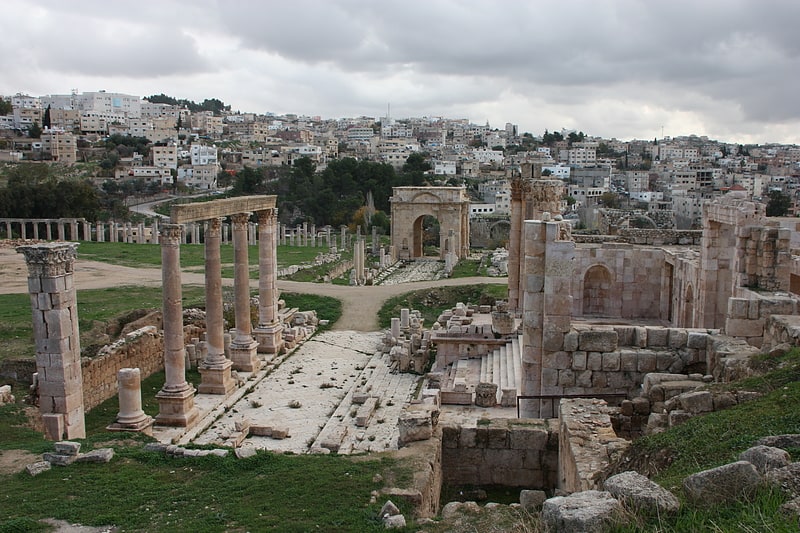
Also known as: جبل القلعة
Well-known historic site with ruins. The Amman Citadel is an archeological site at the center of downtown Amman, the capital of Jordan. The L-shaped hill is one of the seven hills that originally made up Amman.
The Citadel has a long history of occupation by many great civilizations. Evidence of inhabitance since the Neolithic period has been found and the hill was fortified during the Bronze Age (1800 BCE). The hill became the capital of the Kingdom of Ammon sometime after 1200 BCE. It later came under the sway of empires such as the Neo-Assyrian Empire (8th century BCE), Neo-Babylonian Empire (6th century BC), the Ptolemies, the Seleucids (3rd century BCE), Romans (1st century BCE), Byzantines (3rd century CE) and the Umayyads (7th century CE). After the Umayyads, came a period of decline and for much of the time until 1878 as the former city became an abandoned pile of ruins only sporadically used by Bedouins and seasonal farmers. Despite this gap, the Citadel of Amman is considered to be among the world's oldest continuously inhabited places.
Most of the structures still visible at the site are from the Roman, Byzantine, and Umayyad periods. The major remains at the site are the Temple of Hercules, a Byzantine church, and the Umayyad Palace. The Jordan Archaeological Museum was built on the hill in 1951. Though the fortification walls enclose the heart of the site, the ancient periods of occupation covered large areas. Historic structures, tombs, arches, walls and stairs have no modern borders, and therefore there is considerable archaeological potential at this site, as well as in surrounding lands, and throughout Amman. Archaeologists have been working at the site since the 1920s, including Italian, British, French, Spanish, and Jordanian projects, but a great part of the Citadel remains unexcavated.[4]
Museum of Parliamentary Life, Amman
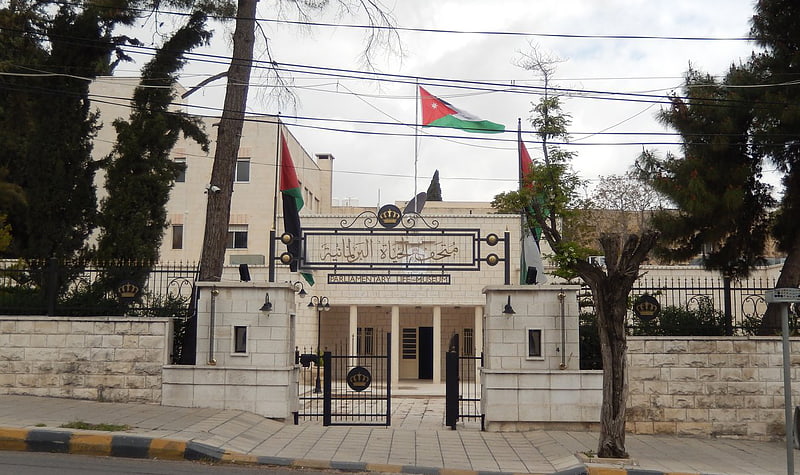
Museum in Amman. Museum of Parliamentary Life is one of the Jordanian museums, which are owned of the Jordanian Ministry of Culture, The Parliamentary Life museum is one of the first models of the parliamentary museums around the world. The Museum of Parliamentary Life aims to highlighted on the efforts exerted by the Hashemite leadership over the past decades in establishing and building Jordan.[5]
Royal Automobile Museum, Amman
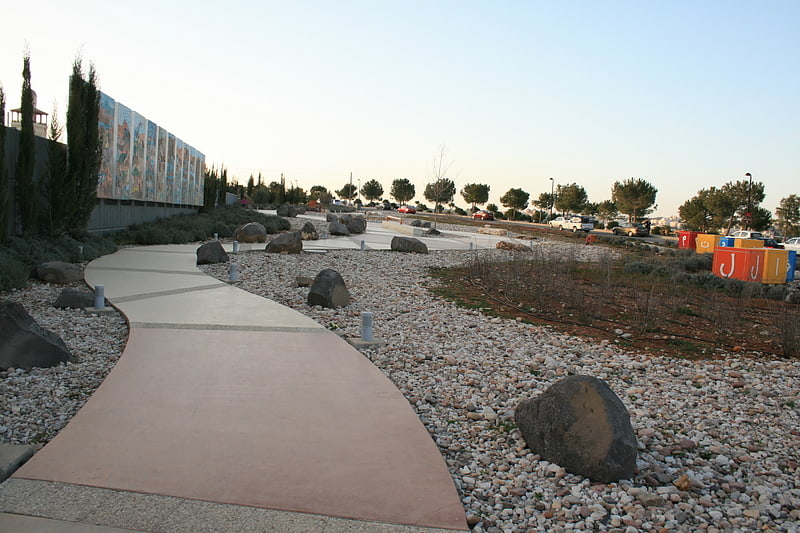
Also known as: متحف السيارات الملكي
Museum in Amman, Jordan. The Royal Automobile Museum is an automobile museum in Amman, Jordan.[6]
Address: King Hussein Park, 111953 عمان
Aqaba Archaeological Museum, Aqaba
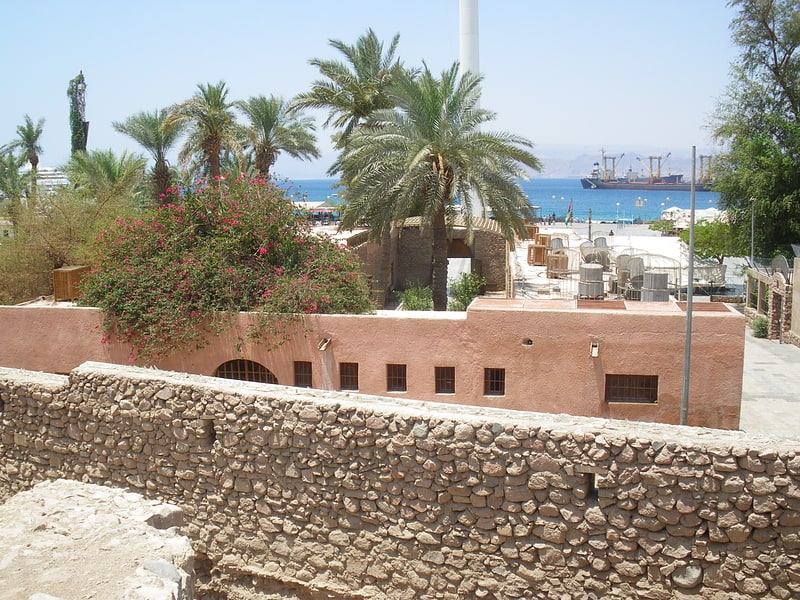
Also known as: متحف آثار إقليم العقبة
Museum in Aqaba, Jordan. Aqaba Archaeological Museum is the official archaeological museum of the city of Aqaba in Jordan.[7]
Aqaba Flagpole, Aqaba
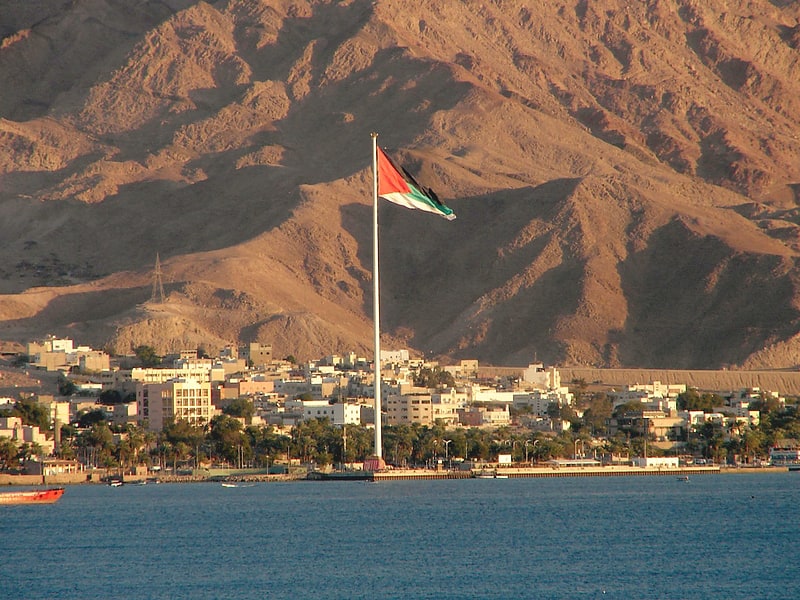
Also known as: سارية العقبة
Landmark in Aqaba, Jordan. The Aqaba Flagpole in Aqaba, Jordan is a 130 metres tall flagpole. This height makes it the 6th tallest free–standing and 7th tallest flagpole in the world. It was the tallest free–standing flagpole in the world until being surpassed by the 133 metres tall Ashgabat Flagpole in 2008. It carries the flag of the Arab Revolt commemorating the Battle of Aqaba that took place in 1917. The flagpole can be seen from Israel, Egypt, and Saudi Arabia. The flagpole was built in 2004 and opened on 3 October 2004.[8]
Tall Hujayrat Al-Ghuzlan, Aqaba

Also known as: حجيرة الغزلان
Tall Hujayrat Al-Ghuzlan is an archaeological site during the Chalcolithic period that lies 4 km north of modern-day Aqaba city in Jordan. Tall Hujayrat Al-Ghuzlan and the neighboring Tall Al-Magass site in Aqaba both have extensive evidence of significant copper production and trade in the region.[9]